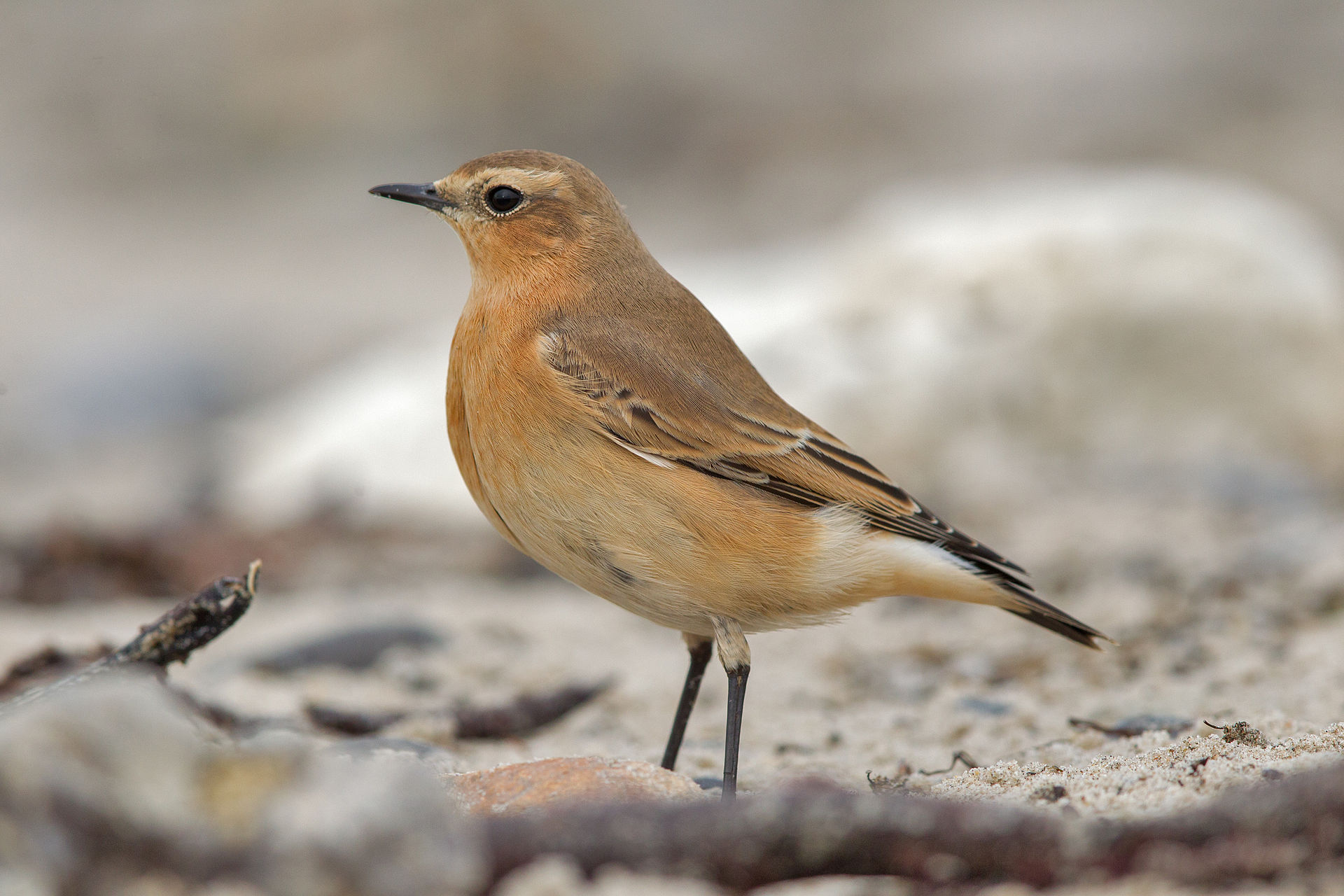Northern wheatear / Steinschmätzer (Oenanthe oenanthe)
Wikipedia eBird Vogelwarte BirdLife ZH ornitho.ch Audubon AllAboutBirds Xeno-Canto BirdID NABU
Male northern wheatear, photo by Andreas Trepte - Own work, CC BY-SA 2.5 Source: WIKIPEDIA Wikimedia Steinschmaetzer_Northern_wheatear_male.jpg
Classification: Genus Wheatears (Oenanthe); Family Old world flycatchers (Muscicapidae)
This bird appears across the great seas in the following continents: Europe, North America, Africa.
General: I thought after seeing these at over 2700 meters that they must be a typical mountain bird (and in the FOK Zurich materials they were in the mountain section), however Wikipedia explains that such a stony landscape is the key, whether that is high or not:
Geography:
Strangely the residence and migration maps differ greatly by source: in Wikipedia the northern wheatear spends winter in subsaharan Africa, while the authoratitive Kosmos-Vogelführer shows some in northern Africa like Morocco. Most other sources agree with Wikipedia and Sub-Saharan Africa.
I thought the German name Steinschmätzer, presumably stone kisser (no one explains it, oddly enough) to be much more logical than the English northern wheatear. I was greatly amused to look it up and find it to be a 'folk etymology of "white" and "arse"' (Wikipedia).
Etymology:
It has an evil-looking black eye stripe like the shrike. (I liked Nici Baiker's description of it in the FOK field ornithology course as 'Zorro look'.) I saw one flying on Muottas Muragl and thought the striking gray oval surrounded by dark feathers has to be typical and seems unique to the northern wheatear.
In den FOK Unterlagen werden die Zugrouten von Alaska und von nordosten Kanada gezeigt, die beide fuer Winter nach Afrika ziehen. Die aus Alaska fliegen ueber Asien unglaubliche 15000 Kilometer! Die in Kanada haben es auch nicht leicht, da sie zuerst ueber den Atlantik nach Spanien fliegen!
Vocalization:
Song:
Calls:
Physical details: length=14-15 cm, wingspan=26-32 cm, weight=18-29 g
Habitats: Mountain Looks similar to: Red-backed shrike. Song:
Song attributes: Melody: improvised melodic, fast, Frequency: 2-6 KHz Special sounds: rasp, rattle
♫ Source: XENOCANTO XC730221 - Northern Wheatear - Oenanthe oenanthe - song recorded in France, just 2-3 notes, then long pause.mp3 (song)

♫ Source: XENOCANTO XC764932 - Northern Wheatear - Oenanthe oenanthe - song recorded in Sweden with lots of whoops and swoops, about 2 seconds long, then 3-4 seconds pause.mp3 (song)

♫ Source: XENOCANTO XC319898 - Northern Wheatear - Oenanthe oenanthe - song recorded in Scotland and includes creaking or rattling mentioned at Nord U BirdID.mp3 Scotland (song)

♫ Source: XENOCANTO XC769228 - Northern Wheatear - Oenanthe oenanthe - song recorded in the Netherlands.mp3 (song)

Call: Automatically generated from Xeno-Canto recording
♫ Source: BirdNet 20210729_130731 birdnet 1864 - Northern Wheatear at lej muragl - Northern Wheatear - Samedan.mp3 2021-07-29 13.07.31 Lej muragl (song?)
First documented observation : 2021-07-29 in Lej muragl.
Media

Female northern wheatear, photo by Andreas Trepte - Own work, CC BY-SA 2.5 Source: WIKIPEDIA Wikimedia Northern_wheatear_Oenanthe_oenanthe female.jpg |

Here a rare picture, by Frederic Peisy from oiseaux.net, showing the famous black T-pattern on its tail and the grey-black wing pattern I used to identify them on Muottas Muragl. Source: OTHER oiseaux.net - Northern wheater typical black T-pattern on tail.jpg |
Steinschmaetzer lej muragl. 2021-07-29 13.13.46 Lej muragl |

Northern wheatear world distribution Source: WIKIPEDIA Wikipedia Oenanthe_oenanthe_map.svg.png |
Steinschmätzer. 2022-06-04 13.44.04 Kaltbrunner-Riet |
Additional Images
|
Steinschmätzer. 2022-06-04 13.44.40 Kaltbrunner-Riet |
Steinschmaetzer lej muragl, guter Blick auf Rueckenfedern. 2021-07-29 13.38.44 Engadin |
Junger steinschmaetzer lej muragl, ahnung von einem Augenstreifen. 2021-07-29 13.25.10 Engadin |
|
Steinschmaetzer lej muragl. 2021-07-29 13.19.42 Engadin |
Steinschmaetzer lej muragl. 2021-07-29 13.19.24 Engadin |